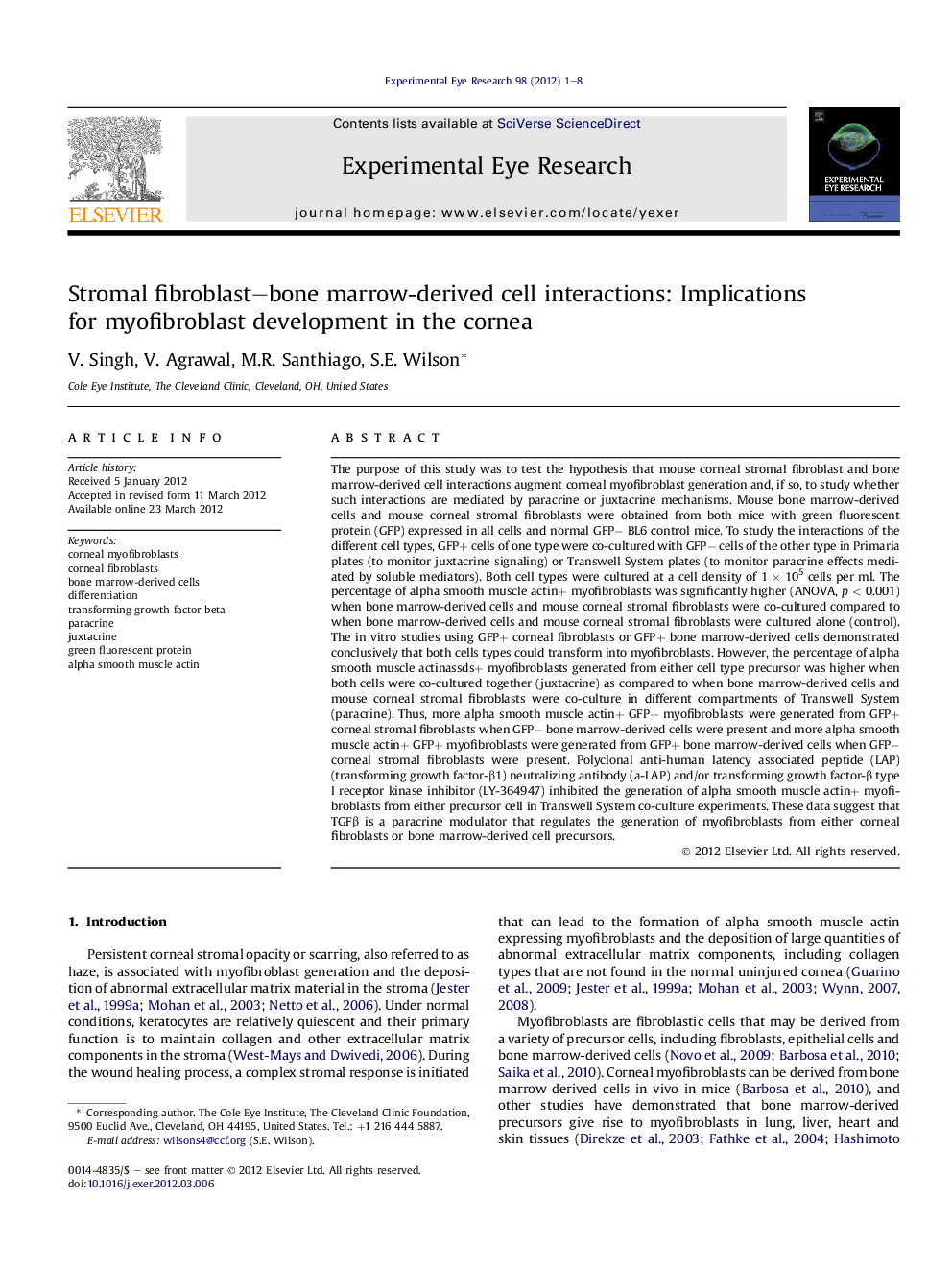| Article ID | Journal | Published Year | Pages | File Type |
|---|---|---|---|---|
| 4011402 | Experimental Eye Research | 2012 | 8 Pages |
The purpose of this study was to test the hypothesis that mouse corneal stromal fibroblast and bone marrow-derived cell interactions augment corneal myofibroblast generation and, if so, to study whether such interactions are mediated by paracrine or juxtacrine mechanisms. Mouse bone marrow-derived cells and mouse corneal stromal fibroblasts were obtained from both mice with green fluorescent protein (GFP) expressed in all cells and normal GFP− BL6 control mice. To study the interactions of the different cell types, GFP+ cells of one type were co-cultured with GFP− cells of the other type in Primaria plates (to monitor juxtacrine signaling) or Transwell System plates (to monitor paracrine effects mediated by soluble mediators). Both cell types were cultured at a cell density of 1 × 105 cells per ml. The percentage of alpha smooth muscle actin+ myofibroblasts was significantly higher (ANOVA, p < 0.001) when bone marrow-derived cells and mouse corneal stromal fibroblasts were co-cultured compared to when bone marrow-derived cells and mouse corneal stromal fibroblasts were cultured alone (control). The in vitro studies using GFP+ corneal fibroblasts or GFP+ bone marrow-derived cells demonstrated conclusively that both cells types could transform into myofibroblasts. However, the percentage of alpha smooth muscle actinassds+ myofibroblasts generated from either cell type precursor was higher when both cells were co-cultured together (juxtacrine) as compared to when bone marrow-derived cells and mouse corneal stromal fibroblasts were co-culture in different compartments of Transwell System (paracrine). Thus, more alpha smooth muscle actin+ GFP+ myofibroblasts were generated from GFP+ corneal stromal fibroblasts when GFP− bone marrow-derived cells were present and more alpha smooth muscle actin+ GFP+ myofibroblasts were generated from GFP+ bone marrow-derived cells when GFP− corneal stromal fibroblasts were present. Polyclonal anti-human latency associated peptide (LAP) (transforming growth factor-β1) neutralizing antibody (a-LAP) and/or transforming growth factor-β type I receptor kinase inhibitor (LY-364947) inhibited the generation of alpha smooth muscle actin+ myofibroblasts from either precursor cell in Transwell System co-culture experiments. These data suggest that TGFβ is a paracrine modulator that regulates the generation of myofibroblasts from either corneal fibroblasts or bone marrow-derived cell precursors.
► Bone marrow-derived cells can give rise to myofibroblasts in vitro. ► Corneal stromal fibroblasts can give rise to myofibroblasts in vitro. ► One cell type augments myofibroblast generation in the other cell type. ► TGFβ regulates the cell interactions that augment myofibroblast development.
